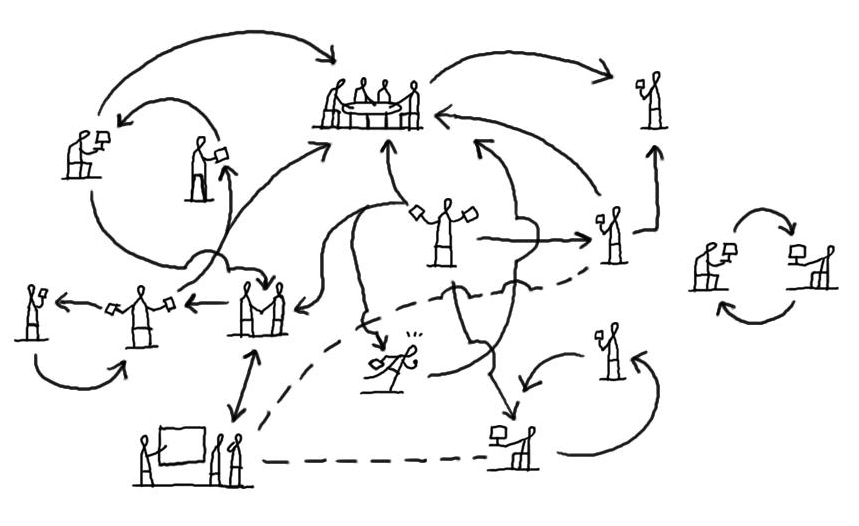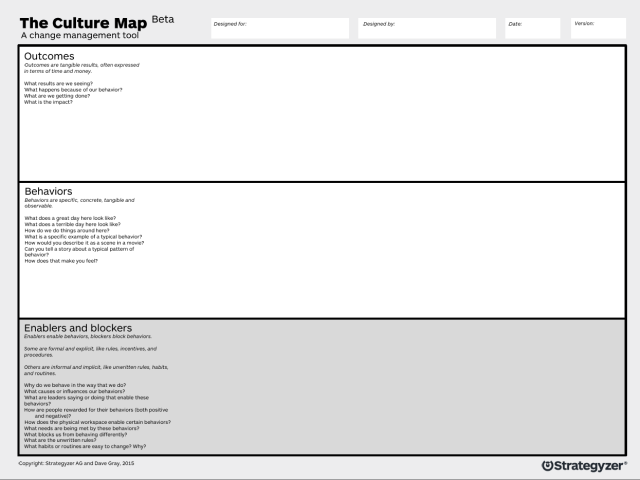Culture: the elephant in the room
Are you struggling to break down organizational silos, increase creativity, engagement and collaboration? Do you feel like the people in your company are resisting change? Is your company’s culture holding you back?
One of the most difficult — yet most important — aspects of any business transformation is culture change. Culture can be a company’s best friend, but when volatility in the business environment requires change, culture can be the biggest obstacle.
In most large-scale organizational change projects, culture is the “elephant in the room.” It is not only undiscussed, it is undiscussable, at least in any serious, meaningful way. And yet it is the biggest threat to any major change.
Peter Drucker famously said “Culture eats strategy for breakfast.” Nobody denies the critical importance of culture to a company’s success. And yet, although everyone agrees that culture is of vital importance, culture still seems fuzzy, vague and difficult to grasp. Culture change initiatives are often well-meaning, but end up as a series of feel-good exercises. They create a feeling that progress is being made, but ultimately fail to deliver results.
The Culture Map
I’ve been working with Alex Osterwalder, Yves Pigneur, Alan Smith, and Chris Finlay to design a tool that organizations can use to assess, map and transform their cultures.
We have been testing with individuals and teams for two years now and so far the feedback has been tremendously positive. It’s a tool that invites deep reflection.
Some of the feedback to date:
“I was amazed at how quickly people opened up and started talking about things they don’t usually talk about. Within five minutes they were sharing insights and ideas with each other.”
“Very clear picture of the actual corporate culture – with huge coincidences across all units and high evidence.”
“High impact on the senior management (real eye opener).”
“Strong basis for following interventions.”
Esko Reinikainen of Satori Lab wrote:
“We’ve been beta testing our own process of deploying the tool with live customers and the results have been nothing short of spectacular including:
Identifying opportunities for massive cost savings.
Identifying where the real innovators in the system are and where they are currently disconnected from decision makers.
Catching outstanding issues which appeared to have been resolved from a management viewpoint.
Understanding absolutely specifically what factors are contributing to erosion of trust within the organisation.
There are other culture mapping models out there but we’ve found that they are unsatisfactory in that they either yield a number, a label, or a prescribed process that assumes humans will respond as predictably to new instruction as components in a machine do. They can also be quite time-consuming, emotionally painful, and extremely expensive. [The Culture Mapping] method is fast, quite fun, yields deep insight incredibly quickly, and is comparatively very cost-effective.”
Here are a few articles on Culture Mapping:
The story of the first Culture Map.
What is Culture Mapping and why should you care?
The Culture Map: A systematic and intentional tool for designing a great company culture.
Scaling the magic: How to hold on to a great culture as you grow.
Best practices for Culture Mapping.
Why your company might be about to have a Kodak Moment.
How large companies can create a lean startup culture for strategy and innovation.
Eight concrete tips on how to intentionally design great culture.
Download the latest version of the Culture Map (PDF).
Join the Culture Mapping Community on LinkedIn.
Subscribe to be notified when there’s news about the Culture Map.
You can also arrange a Culture Mapping workshop where you and your team can learn to apply this powerful new method.



